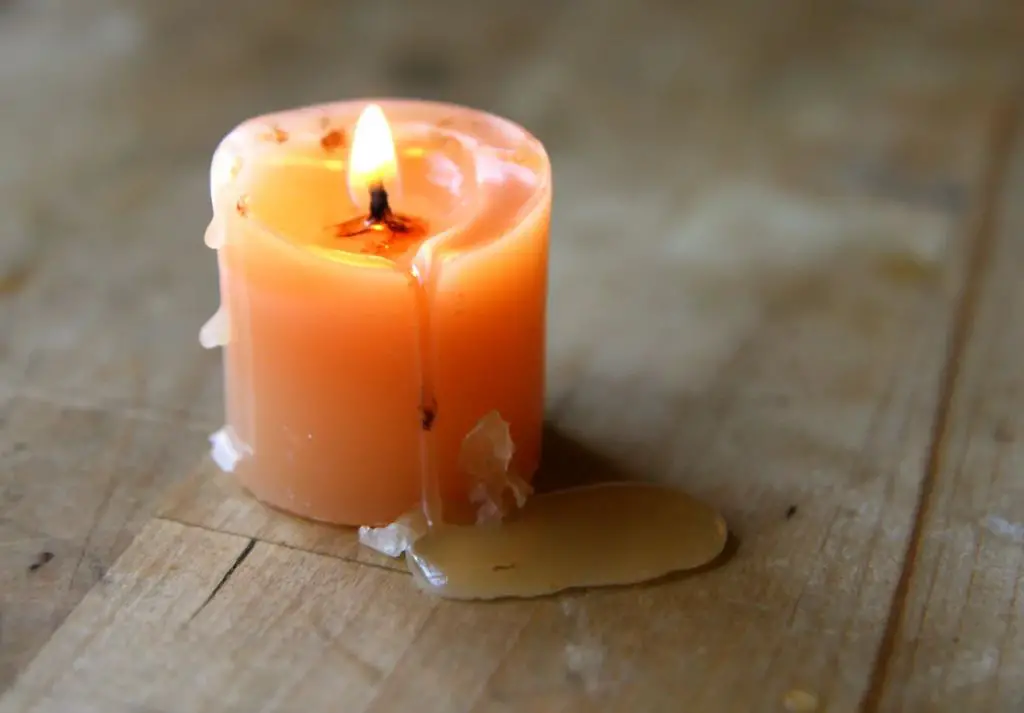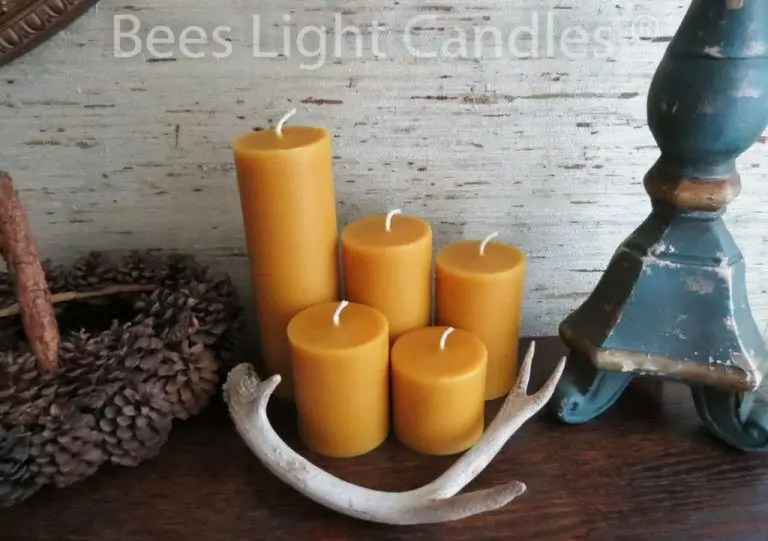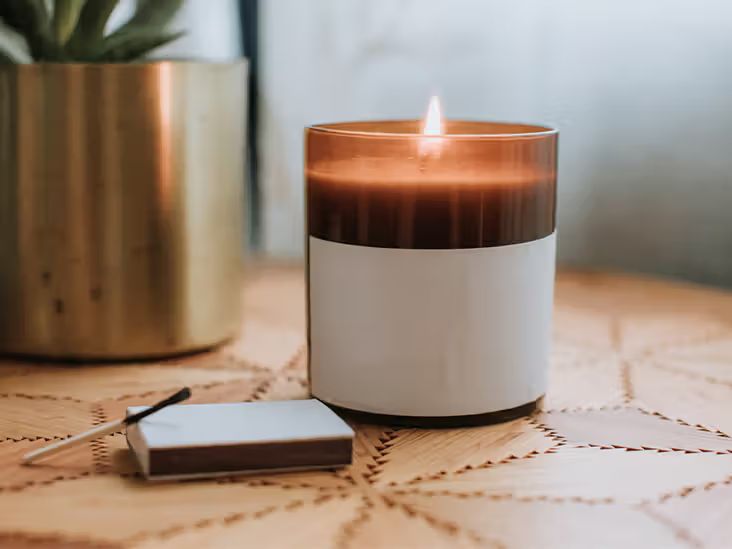How Much Wax Does A Votive Candle Hold?
What is a Votive Candle?
A votive candle is a small candle that is placed inside a glass or metal holder. The word “votive” comes from the Latin “votum” meaning vow or dedication. Traditionally, votive candles were used for religious purposes as offerings or to symbolize prayers. They would be lit as part of a ceremony or ritual and allowed to burn for a period of time. Votive candles are cylindrical in shape, around 1 to 3 inches tall, and 0.5 to 1 inch in diameter. They are made of wax, typically paraffin or soy wax (1).
Today, votive candles are still used in some religious settings, but are also popular for decoration and ambient lighting. They come in a wide variety of colors and are inexpensive to purchase in bulk. Votive candle holders are reusable and allow the candles to burn safely when the wax melts. Common places to find votive candles include churches, temples, weddings, restaurants, spas, and homes (2). Overall, a votive candle is known for its short, stout appearance and placement in a small container to catch the wax as it melts when lit.
Sources:
(1) https://www.merriam-webster.com/dictionary/votive%20candle
(2) https://dictionary.cambridge.org/us/dictionary/english/votive-candle
Common Sizes of Votive Candles
Votive candles come in some standard sizes, though there can be minor variations between brands and manufacturers. The most common sizes for votive candles are:
- Diameter: 1.5 inches (4 cm)
- Height: 2 inches (5 cm)
As one customer on Amazon confirms, “These are standard votive candle sizes – 2 inches high by 1.5 inches in diameter”. The diameter of 1.5 inches allows votive candles to fit nicely into the common glass votive holders found at many stores.
Some votive candles may be a bit taller or shorter than 2 inches, with heights ranging from 1.5 inches to 2.5 inches generally. The diameter also sometimes extends up to 2 inches. But the standard sizes remain around 2 inches tall by 1.5 inches wide.
How Votives Differ from Other Candles
Votive candles differ from other candle types in a few key ways:
Compared to tapers, votives are short, flat candles that sit in containers rather than needing candle holders. Tapers are tall, thin candles that insert into candlesticks. Votives range from 1-3 inches tall, while tapers can be over 12 inches tall. Votives are also wider than tapers.1
Pillar candles are wide, cylindrical candles. They can be much taller than votives, ranging from 4 inches up to 36 inches tall for large pillar candles. Votives have a shorter, squatter shape compared to pillars. Pillars also don’t require containers, while votives need a cup or dish to hold the melted wax.
Votives differ from container candles, which are poured directly into jars or tins when manufactured. Votives are molded candles placed into containers after being made. Container candles also tend to have larger diameters and taller sides than votive cups.
Compared to tea lights, votives are larger and taller, ranging from 1-3 inches high versus a tea light’s 0.5-1 inch height. Votives require containers, while tea lights have their own built-in metal cups. However, tea lights and votives can often be used interchangeably.2
In summary, votives have a distinct short, wide shape that sets them apart from taper, pillar, container, and tea light candles. Their size and need for cups or holders are their defining features.
Average Wax Weight of a Votive
The typical wax weight range for a standard votive candle is between 1.5 and 2 ounces (CandleMakingSupplies). This equates to 42-57 grams of wax in a votive candle. The wax weight can vary based on the diameter and height of the votive holder, but most standard votives hold wax weights in this range.
According to industry experts, the average wax used per votive candle is around 50 grams or 1.76 ounces (Armatage Candle Co.). This accounts for the variability in votive sizes and styles. In general, the wax weight ranges from about 40-60 grams per votive candle.
Factors That Affect Wax Weight
There are several key factors that determine how much wax a votive candle can hold:
Wick Size
The thickness of the wick is a major factor. A thicker wick will allow more wax to melt at one time, meaning more wax is needed for the candle. Standard votive wicks tend to be fairly thin, in the range of CD 7-9 size.
Container Shape
Votive containers are short and wide, with straight sides. This shape maximizes surface area, allowing more wax to pool and evaporate to release fragrance. The standard votive glass or metal container holds more wax than a narrow pillar container of the same height.
Wax Density
Different wax varieties have different densities. Beeswax is denser than paraffin or soy wax, for example. More dense wax equals more weight of wax in the same volume. Most votives use a blended wax for ideal burn properties. Standard votive wax density ranges from around 0.9 to 1 g/ml. (Source)
By selecting the proper wick, votive container, and wax, manufacturers optimize the candle’s wax fill weight and burn time. Typical votives hold between 1.5 to 3 ounces (40-85 grams) of wax.
Measuring Wax Weight
To accurately determine the amount of wax in a votive candle, you need to weigh the candle. Here are the main methods for measuring the wax weight:
Using a kitchen scale – This is the simplest method. Place an empty votive container on the scale and tare it to zero. Then fill the container with wax and note the weight. Be sure to account for any fragrance or dye additives when calculating the net wax weight.
Water displacement method – Fill a container with water, then submerge the unburned votive candle. Measure how much water is displaced to determine the wax volume, then calculate weight using the density of the wax.
Melting and weighing – Burn the votive candle until just a melted wax pool remains. Allow to fully harden, then remove wax and weigh on a scale. Subtract container weight.
Votive wax weight ranges from around 1.5-3 ounces or 40-85 grams per candle. The exact weight depends on factors like container size, wax type, and production method. When measuring wax weight yourself, be sure to weigh multiple candles and average the results for an accurate value.
Knowing the precise wax weight helps candle makers calculate fragrance and dye amounts when formulating votive candles. It also assists consumers in comparing votive volumes between different brands and models.
Uses and Burn Time
Votive candles have many common uses. They are popular for decorating tables at events like weddings, parties, and holiday gatherings. Votives add a warm glow and ambiance to any setting. Their small size makes them versatile for use in candle holders, hurricane lamps, and small decorative displays. Votives are also frequently used in religious ceremonies and rituals.
The expected burn time for a votive candle is between 3-9 hours. According to tests by LovetoKnow, the average votive burns through most of its wax within about 3 hours [1]. However, factors like wax type, wick size, air drafts, and more can affect burn time. A high quality votive with the proper wick may provide up to 9 hours of burn time. But 3-6 hours is typical for most standard votive candles before they extinguish themselves.
Buying Votives in Bulk
Many people buy votive candles in bulk for events, religious ceremonies, home decor, and more. Buying in bulk allows you to purchase votives at a discounted price per unit compared to buying individually. There are several places to buy votive candles in bulk online and in stores.
Popular online stores for purchasing votives in bulk include VaseSource, Candlewic, and Amazon. These retailers offer bulk cases of votives, often ranging from 100 to 1000 candles per case. Expect to pay around $0.10 to $0.60 per votive candle when buying in bulk. The more you buy, the lower the per unit price.
Craft stores like Michaels and Joann Fabric also sell multi-packs of votive candles. You may also find votive candles in bulk at some department stores, discount retailers, and import stores. For specialty votive candles like beeswax or soy options, check natural food stores and candle supply shops.
When buying votives in bulk, first determine how many you need and what style. Then compare prices across retailers. Consider shipping costs for online orders. Buying by the case usually provides the best value overall.
Votive Candle Wax Recycling
Leftover wax from votive candles can be easily recycled and reused. Since most votives are made from paraffin wax, they can be combined with other paraffin wax scraps for new candles or other wax projects.
To reuse votive wax, start by removing any wick fragments and trimming off the very bottom of the candle if it contains impurities from the holder. Allow liquid wax to fully harden before recycling. The easiest method is to place votives in the freezer for a couple hours until the wax is frozen solid. Then you can pop out the frozen wax with a butter knife and store it for later use.

According to Chatelaine, one key tip when recycling votive wax is to keep batches from similarly colored candles together, as this will help avoid wax discoloration when melted down again.
Recycled votive wax can be melted and poured into molds to make new candles, combined with beeswax or soy wax to modify properties, or used for wax craft projects. Get creative with giving votive wax new life! Proper recycling keeps waste out of landfills.
History of Votive Candles
Votive candles have a long history of use in Catholic and other Christian churches. The practice of lighting votive candles began in the Middle Ages as a way for Christians to offer their prayers to saints or to God.1 Votive comes from the Latin “votum” meaning vow or dedication. By lighting a candle, Christians symbolically offer their prayer and demonstrate their continuing prayer as the candle burns down.
In the early church, candles were placed by saints’ relics or on their tombs in the catacombs of Rome as a sign of Christian’s prayer and a request for the saint’s intercession. The practice spread and candles were soon lit not only by saints’ relics but also in front of their images and icons. The candles represented the ongoing prayer and devotion of the faithful after they left the church.
Over time, the practice expanded from honoring saints to also offering votive candles directly to God or Jesus. Today, votive candles continue to be an important part of Catholic and Orthodox worship and devotion. They are lit by side altars, shrines, and sacred images as tangible symbols of prayer.



